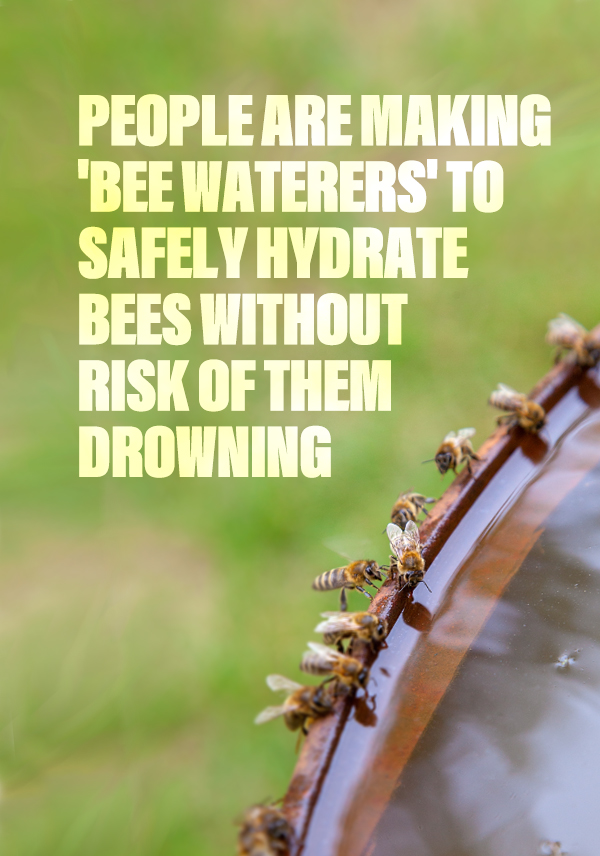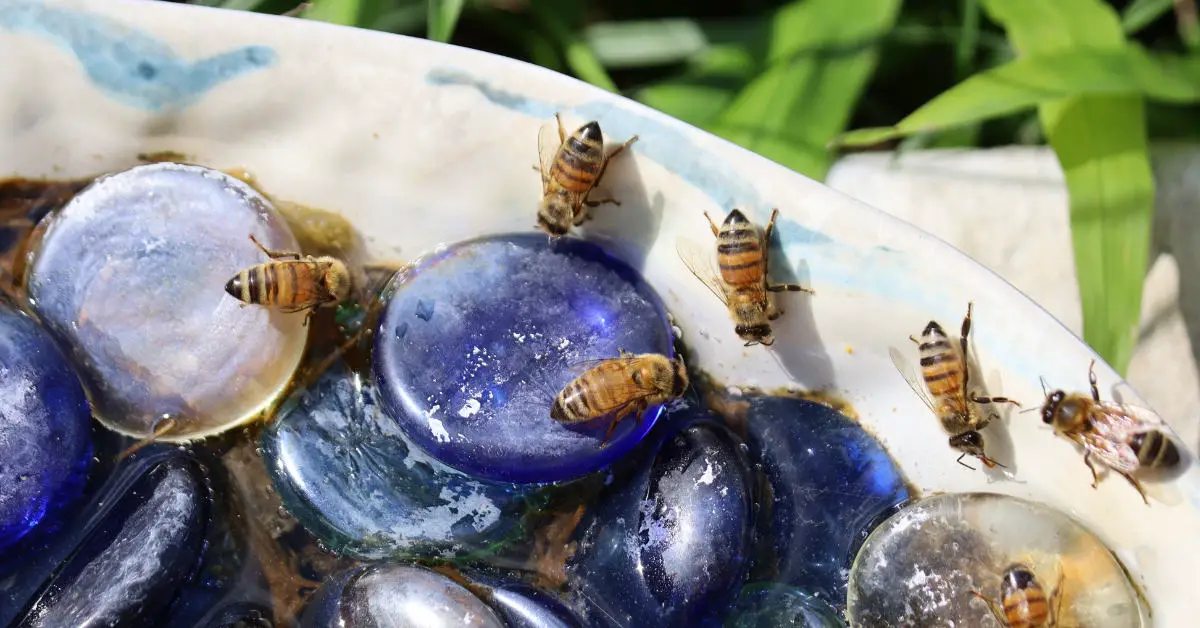When we come across bees, often our initial reaction is fear that they’d sting us. However, bees are actually essential to our environment, and they have better things to do than stinging people. The term “busy as a bee” came from somewhere, after all. Simply put, bees pollinate many of our plants, including most of our produce. So don’t try to shoo away bees from your garden and flowers; they do us a big favor. Instead, help them out with a bee waterer.
What is a Bee Waterer?
While we know that bees consume nectar, they also need access to clean water to survive — just like most species. They need it to drink, to thin crystallized honey in the winter, and to cool down the hive in the summer. However, bees easily drown since their bodies and wings get weighed down by the water. There’s an easy way to design a bee waterer that allows them to drink safely to prevent this. It looks pretty, and it takes only minutes to assemble and even less time to upkeep.
Water is essential for bees, but many water sources expose them to contaminants that could potentially harm them. For instance, notice the bees attracted to a chlorinated swimming pool. Providing clean water is an efficient and cost-effective way to keep the bees safe from pesticides and the like. [2]
How To Make A Bee Waterer
You will need:
- 1 shallow container
- Glass pebbles or marbles (choose any color you like!)
- A way to elevate the container, such as a stand, table, or stool (to avoid other animals from getting to it)
- Water
How to assemble the bee waterer:
- Place the container on the elevation device of your choosing.
- Place the pebbles or marbles somewhat evenly in the container.
- Add water to the container. Take care not to flood the pebbles; the top layer should be out of the water so the bees could land on them to take a safe drink.
- Refill the water as needed or when the water becomes dirty. (Helpful tip: add this bee waterer to your watering garden routine.) [3]
If you’re a visual person, you can watch this video on how to make a similar, but different version of bee waterer.
Read: Woman Shares Photos of an Amazing Flower-Like Bug That Looks like A Work of Art

Do Not Add Sugar!
In 2018, a fake Facebook post went viral from famous naturalist and broadcaster Sir David Attenborough. The post encouraged people to save exhausted bees by providing them with sugar water. Some social media users took this message to heart, filling birdbaths and buckets with sweet water to help the bees as much as possible. This post was false and was taken down by Facebook. It was written by an account impersonating Attenborough.
Truthfully, beekeepers do sometimes feed their bees sugar when there’s not enough nectar to sustain them. In the hands of professionals, this could protect and strengthen the hive and its production. But it’s not an ideal supplement since it doesn’t contain any nutrients found in pollen. Instead, it’s just an empty source of energy that can make the bees lethargic, and long term, could lead them to cannibalize their larvae.
Additionally, don’t feed honey to the bees. Honey could contain pathogens that could destroy an entire colony. [4]
Help the Bees
Setting out attractive bee waterers is one way to help the neighborhood bees, but the most effective way to help the declining bee population is by planting more flowers. Keeping flowers blooming all year round could help the bees continue to feed and populate.
Bees numbers are dropping. One study published in the Journal of Insect Conservation found that bee populations fell 89% from 2007 to 2016. “During the past 50 years, the number of managed honey bees has declined,” says NRCS. “Each winter since 2006, about 30 percent of beehives collapsed because of disease, parasites, poor nutrition, pesticide exposure, and other issues.” [5] “Other issues” includes habitat destruction.
Other ways to help the bees include:
- Easing on the pesticides, and instead get plants that naturally repel pests like how garlic repels aphids
- Border your vegetables and fruits with native flowers to promote pollination
- Install a bee hotel or bee block for bees to inhabit
- Plant milkweed in your garden
- Plant native flowers with a variety of colors and shapes [6]
Keep Reading: Couple Restores Hundreds Of Animal Species To Forest By Planting 2 Million Trees
Sources
- “Creating the Best Water Sources for Bees.” Backyard Beekeeping. Rusty Burlew. March 14, 2021
- “Supplying honey bees with waterers: a precautionary measure to reduce exposure to pesticides.” Environmental Science and Pollution Research. Frédéric McCune. January 5, 2021
- “How to Create a Bee wATerer for Your Backyard For $10 or Less.” Real Food Homestead. Julie Gropp.
- “Should You Feed ‘Starving Bees’ Sugar Water?” Snopes. Alex Kasprak. August 4, 2018
- “Conservation Work for Honey Bees.” USDA. Natural Resources Conservation Service.
- “9 Ways You Can Help Bees and Other Pollinators At Home.” National Geographic. Jennifer S. Holland. May 24, 2015

